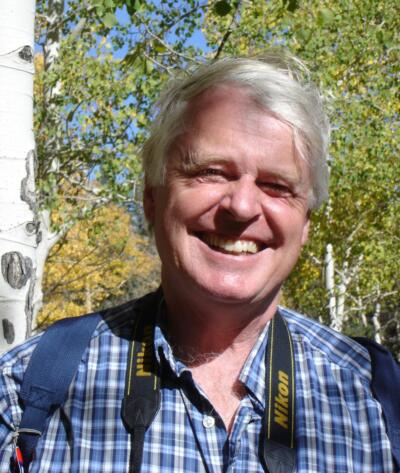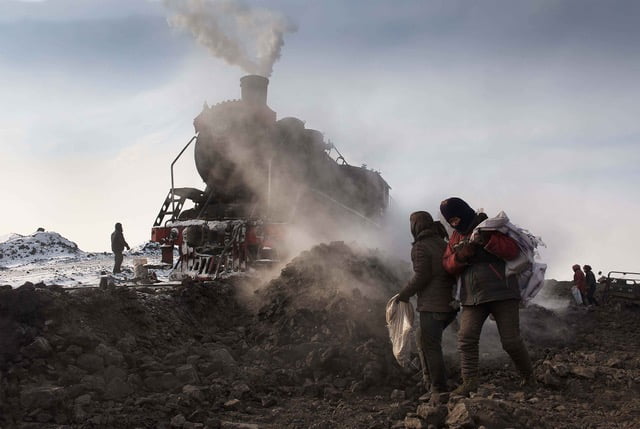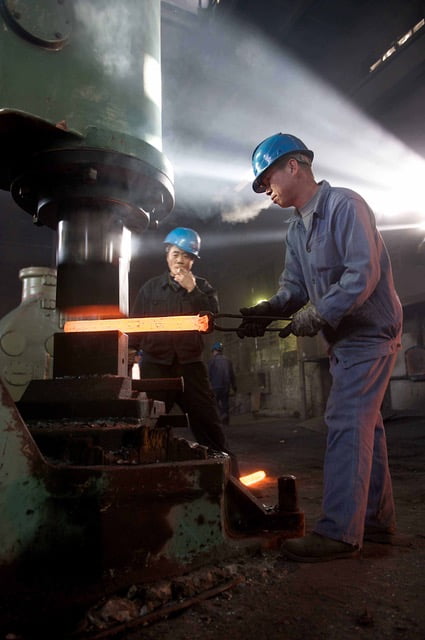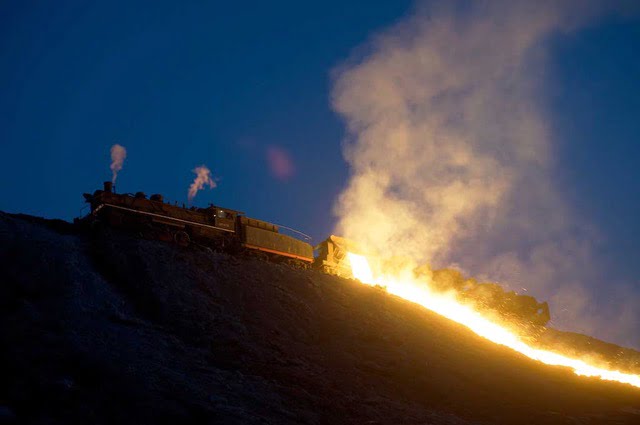A Chinese age of steam
The Last Steam Railways
Volume 1: The People’s Republic of China
by Robert D. Turner
Madeira Park: Harbour Publishing, 2022
$79.95 / 9781550179910
Reviewed by Bob Whetham
*

Bob Turner spent many years working as an historian in museums and with heritage sites in BC. This is his 19th book on transportation history and the result of nearly two decades scouring the world to locate and photograph the last working steam locomotives in commercial service. Whether double heading heavy mainline trains over mountain passes, working in gritty industrial sites, or traversing remote forestry lines, Bob captures the flavour and drama of steam locomotives in their element with unforgettable images and an informative account of this now vanished era of railroading.

Of all of the countries to retain steam into the 21st century, the People’s Republic of China was the last to use them in large numbers. Diesel and electric locomotives had already displaced steam on all but a few of the world’s railways when China began its own locomotive building program initiated under Chairman Mao Zedong in the 1950s and 1960s. Some 2,000 were available for service after the year 2000 and many were less than 20 years old.
China’s fragmented system of railways was in a shambles when the country was formed in 1949 and “… reconstructing the railways was a priority, both for national development and for strategic reasons.” Faced with a pressing need to replace its diverse collection of damaged and worn out locomotives and having abundant supplies of cheap local coal and a labour force with extensive steam experience but little technical education, China turned to steam traction as a necessary stop-gap measure in the relentless drive towards modernization.
Lacking building capacity of its own, initially China relied heavily on the Soviet Union for technical expertise and materials but began to construct its own locomotives as industrialization progressed. The first examples were based on Japanese locomotives used in the northern part of the country, the design having been derived from an Alco 2-8-2 constructed for the South Manchurian Railway.
Ultimately, China would develop its own standard designs incorporating features from American, Soviet, and Japanese practice, mass producing over 10,000 new locomotives before production ceased in 1988.

Jixi, 2011, coal pickers standing. Photo Robert D. Turner
Bob Turner was among a group of relatively few photographers to record lines in remote parts of the country that had been closed to foreigners until the late 1980s. Officials unfamiliar with visitors, particularly those with an unusual and suspect interest in railway subjects would present an occasional challenge but were resolved with good humour. In addition, many photos were taken during the winter months in bitterly cold, below zero temperatures. Bob’s perseverance and skill are reflected in dramatic scenes of hard-working locomotives trailing plumes of steam as they charged across stark landscapes. Details are not forgotten and neither are the people with evocative images of the frozen wheels and driving rods of a locomotive taken during a New Year’s shutdown and coal pickers sorting though steaming waste for useable bits of unburned coal as a locomotive simmers in the background.

The book is divided into three parts. Part 1 covers the end of steam on Chinese Railways and a fascinating look at the JiTong Railway in the Inner Mongolia Autonomous Region. Described as the world’s last major steam powered railway the 945-kilometre line opened in 1995 using second hand 2-10-2 QJ Class steam locomotives acquired from the Chinese national system. Double-heading was standard practice over Jinpeng Pass, the spiraling loops and elegant high sweeping curved viaducts providing opportunities for striking photographs as locomotives laboured upgrade with heavy trains. Semaphore signalling contributed to the atmosphere.

Steam on the JiTong Railway ended in late 2005 but standard gauge steam continued to play an important role in industry, the last few locomotives remaining in service as recently as 2020. Security and safety concerns often prevent access to industrial sites but Bob was able to photograph railway activity in a number of coal mines and steel mills. These lines are described in Part 2. Industrial traffic was generally handled by standard SY or JS Class 2-8-2 locomotives although a few smaller ones were also recorded. Evening scenes of slag being dumped are dramatic and the spidery web of rails punctuated by wisps of steam from a dozen locomotives working in the immense wasteland of the Big Pit at Jailanur are unforgettable.
Apart from heritage lines, narrow gauge railways in most parts of the world were already in decline or abandoned when China started to build a network of 762 mm gauge lines projected to reach a peak of more than 3,000 kilometre. Remarkably, a few of these lines survived into the 21st century, two of them on the outskirts of Beijing. Built primarily to serve forestry and mining industries, they are described in Part 3. Power was supplied by standardized 28 ton 0-8-0 C2 Class locomotives based on a design developed in Eastern Europe but often modified to meet local conditions. Separate chapters are devoted to each line including details of their operation and a selection of captivating photographs.

Whether riding in the cab of a QJ or taking refuge from the cold in a station keeper’s hut, Bob’s ability to engage with train crews and others along the way brings a special warmth to this account. The selection of stunning photographs supported by well researched and informative text make this a fitting tribute to steam’s finale in China.
*

Born in Calgary, Alberta, Bob Whetham is a retired land use planner with a life long interest in travel and railways. Spending his early years in South America, he later travelled through out Africa, Asia and parts of Europe following old reports and rumors to explore out-of-the-way places and seek out the fast- disappearing world of narrow gauge. Bob is married and the author of several books including “in Search of the Narrow Gauge” and two on the historical development of railways in Peru. He also co-authored an account of railways in Colombia and continues to research railway subjects. He currently serves as a volunteer and most recently as Board Chair of the Cranbrook History Centre.
*
The British Columbia Review
Interim Editors, 2023-24: Trevor Marc Hughes (non-fiction), Brett Josef Grubisic (fiction)
Publisher: Richard Mackie
Formerly The Ormsby Review, The British Columbia Review is an on-line book review and journal service for BC writers and readers. The Advisory Board now consists of Jean Barman, Wade Davis, Robin Fisher, Barry Gough, Hugh Johnston, Kathy Mezei, Patricia Roy, Maria Tippett, and Graeme Wynn. Provincial Government Patron (since September 2018): Creative BC. Honorary Patron: Yosef Wosk. Scholarly Patron: SFU Graduate Liberal Studies. The British Columbia Review was founded in 2016 by Richard Mackie and Alan Twigg.
“Only connect.” – E.M. Forster
One comment on “A Chinese age of steam”
I would very much like to get in contact with Bob Whetham, as I am writing a book / memoir about my grandfather, who sailed from Scotland to Peru in 1910 and worked on the Lima-Huacho Railway as a newly qualified surveyor / engineer. He then moved to Calgary in 1912 and worked on the Canadian Pacific Railway before WW1 broke out, and he went to Ypres with the Princess Pat’s and became a biplane pilot and instructor until 1918. He returned to his homestead near Calgary after the war, but after a couple of years, moved to Montreal, followed by Connecticut, Australia, Scotland, London and then spent WW2 as adjutant with a fighter squadron . He spent the rest of his time in London as a social worker, then land planner for the council before retiring to the coast. Sadly, he died before I was born, but he left a large collection of photographs, cuttings, postcards and diaries from his travels.
I would like to connect with Bob, as he would probably have some insights into what life might have been like for my grandfather (Herbert W McGowan) in Peru and in Canada. I would love to get a clearer picture to help me write a book about his life, loves and passions.
I have sent an email to the Cranbrook History Centre as well, so please send my apologies to Bob for my scattergun approach to getting in touch!
All the best,
Fiona